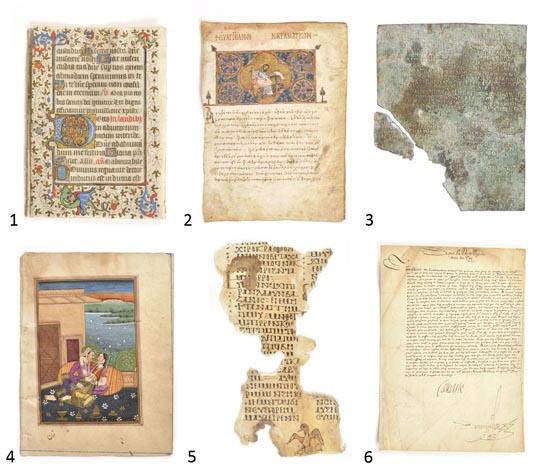We’re celebrating the beginning of a new fiscal year with a week’s worth of new acquisitions from the first half of 2012. Two newly acquired selections will be featured in a post every day this week. All of these amazing resources are available for today’s scholars, and for future generations of researchers in the Rubenstein Library!
- Kitab Dala’il al-Khairat wa Shawariq al-Anwar fi Dhikr al-Salah ‘ala al-Nabi al-Mukhtar [Guidebook of Benefits and Illuminations of Prayers to the Chosen Prophet]. The Dala’il al-Khairat of al-Jazuli (Al-Jazuli, Abu ‘Abdallah Muhammad ibn Sulaymana, d. 1465) is one of the most popular devotional works in Islam, comprising a cycle of prayers to the prophet Muhammad. The manuscript now at Duke is Arabic written in the Maghrebi script, and likely was created in North Africa in the late eighteenth or early nineteenth century. The manuscript also contains other prayers and devotional texts. Its calligraphy and ornamentation are beautiful witnesses to a text of surpassing importance in the Muslim faith.

- National Coalition for Haitian Rights Records: This organization is dedicated to furthering the civil and international human rights of the Haitian community in the US and helping influence US policy over Haiti to support human rights. In over 146 linear feet of material, the records document the activity of the Coalition from 1981 to 2003. This adds to a growing collection of material in the Human Rights Archive related to human rights in Haiti; see the Human Rights Archive’s LibGuide for more information on other collections related to human rights in Latin America.
Previous posts:







